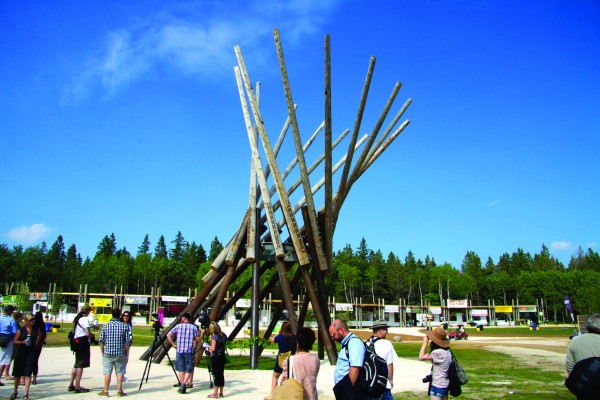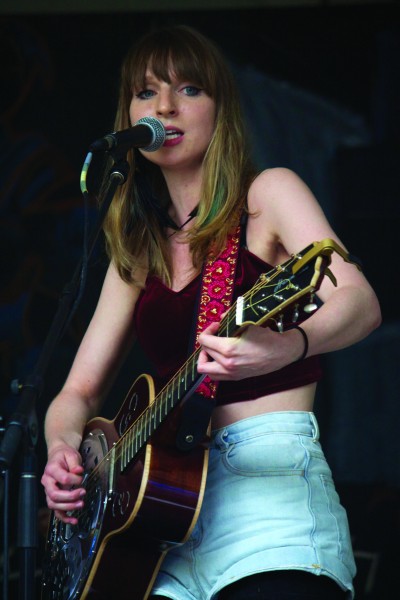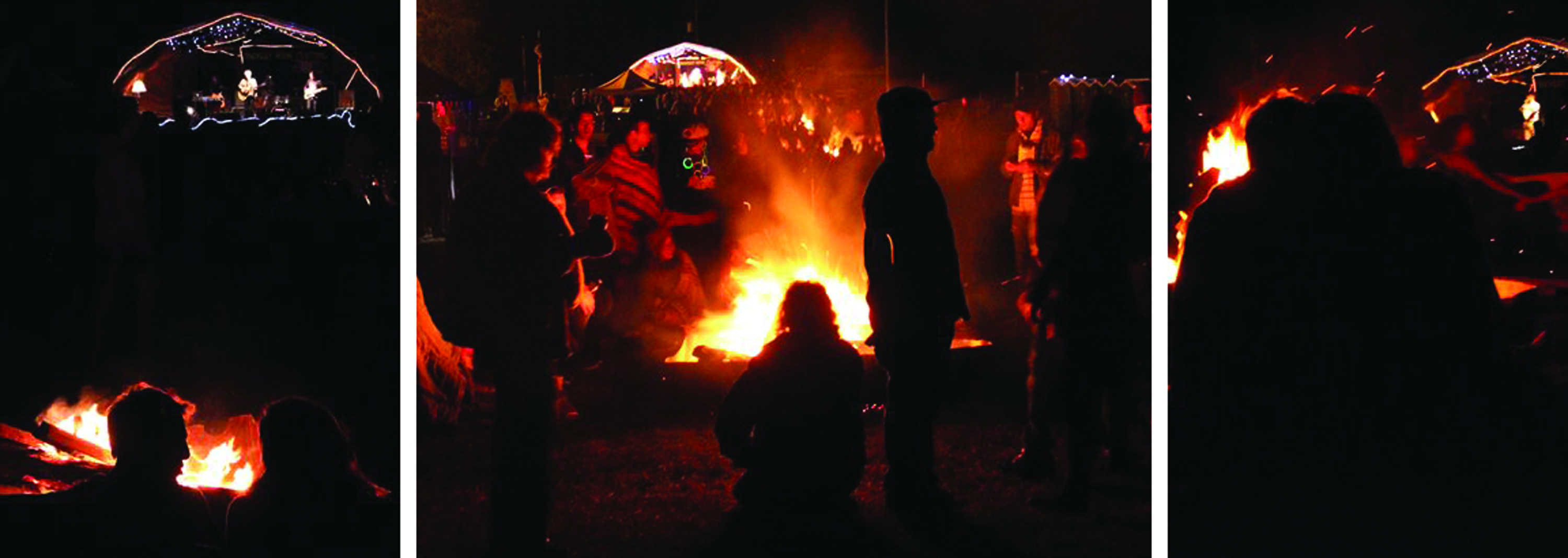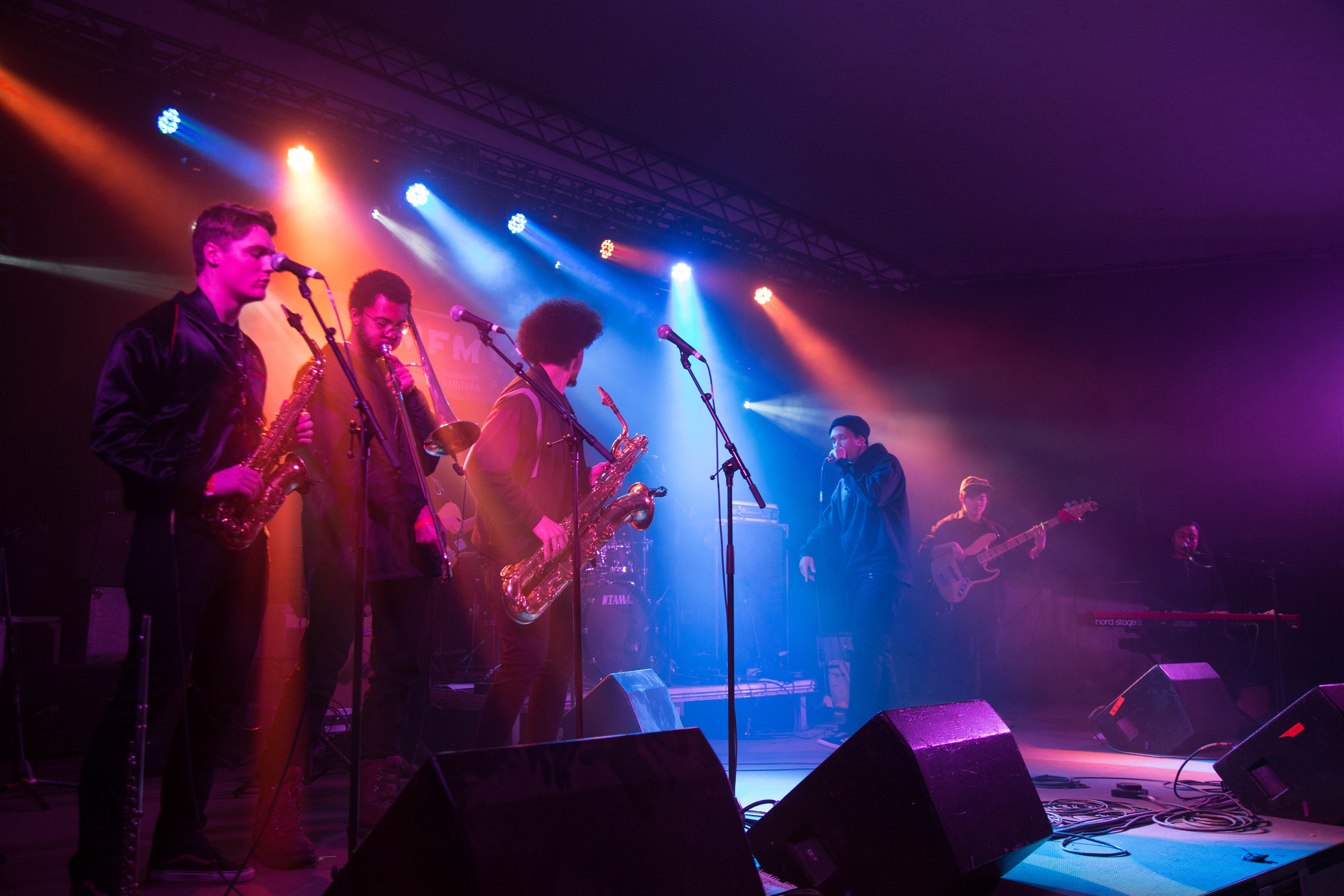Whether you’re a seasoned veteran or a first time Winnipeg Folk Festival goer, chances are you’ve had your fill of folk (and large exuberant crowds) for a while.
Three thousand volunteers, 300 musicians, and over 57,034 patrons—full festival pass holders, daytrippers, and campers all included—attended the spectacle that was the 40th annual Winnipeg Folk Festival (WFF). That total comes in just shy of the largest cumulative turnout which happened in 2011, when the fest attracted 59,553 festival goers. The 40th fest did, however, break records for day ticket sales for Wednesday (11,455), Thursday (10,658), and Saturday (12,499).
A sign of the times, WFF continues to make ever more concerted efforts to “green up” the five-day-long festival. Compost, recycling, and garbage bins were numerous; free “snuffer” pockets were handed out for smokers to store their butts in lieu of littering; bicycling to the grounds was promoted; and free campground shuttle services were offered in the name of reducing WFF’s carbon footprint.
The festival location went through a number of other upgrades in the offseason. On opening day, the new festival village was unveiled with a range of new eateries, tents, vendors and the Festival Tower – a spiralling edifice comprised of fused iron rods and dense wooden pillars meant to subtly gesture attendees in the direction of the main stage.
At the main stage, animated acts like the Cat Empire rallied young and old up to their feet with their piping hot horn section; songstress Serena Ryder moved thousands with her sonorous and emotive repertoire; Josh Ritter and company were so electric they caused power surges during their set; and City and Colour wooed and charmed festival goers in the twilight of opening night.
Josh Ritter and the Royal City Band – Photo: Vladimir Snovida
As usual, the main stage attracted the most well-established acts and the largest crowds. Smaller stages like Shady Grove—a hole in the woods with an overdrawn forest canopy, hence the name—provided festival goers with an opportunity to take in up-and-comers like Sc Mira.
Sc Mira, or Stephanie Haderer, graced the WFF stages for the first time last year as part of the Young Performers (YP) Program, an initiative meant to both highlight talented local artists as well as pair them up with a professional musician (or “mentor”) performing at WFF for a daylong workshop prior to hitting the stage.
This year Sc Mira, Charlotte Kosc, Luke Reimer, Marisolle, Brett Ticzon, Rebecca Lappa, and Krista Janzen had the pleasure of being grouped together and spending the day with Melissa McClelland of the band Whitehorse. Mentors like McClelland spend a day with a group of musicians, sharing career advice, their own experiences in the industry, and running through each individual performer’s songs with them in a group setting, giving them feedback along the way.
That group setting not only fosters new relationships between YP participating members of the local music community; it also functions to create future opportunities to play the Folk Exchange and other venues.
“I felt more a part of the community this year because the first year I [participated in the Young Performers], I didn’t know anybody,” said Haderer of Sc Mira.
“I got contacted by Folk Fest and was asked to open for [another artist] following last year’s performance, and then I played some open mic nights at the Folk Exchange. I ran into all of these young performers this past year, and so when I did the program this year there were more familiar faces, people that played the [Young Performers] stage last year. [The Winnipeg Folk Festival] really likes people coming back and doing the program more than once.”
This collaborative aspect between artists in workshops on stage and behind the scenes represents one of the most important facets of what WFF is all about: bringing people together for six days of music and cultural fellowship unmatched by any other folk festival in Canada.
Until next year, Winnipeg Folk Festival: happy 40th!
